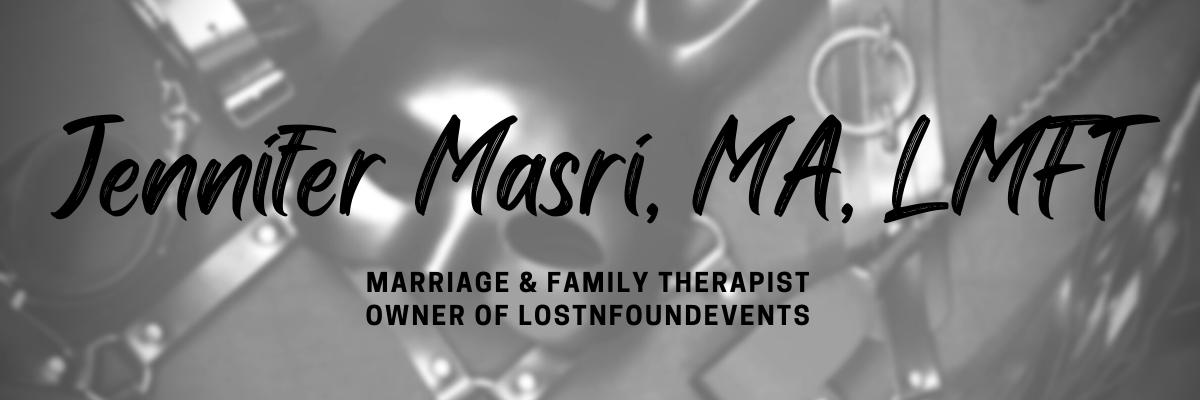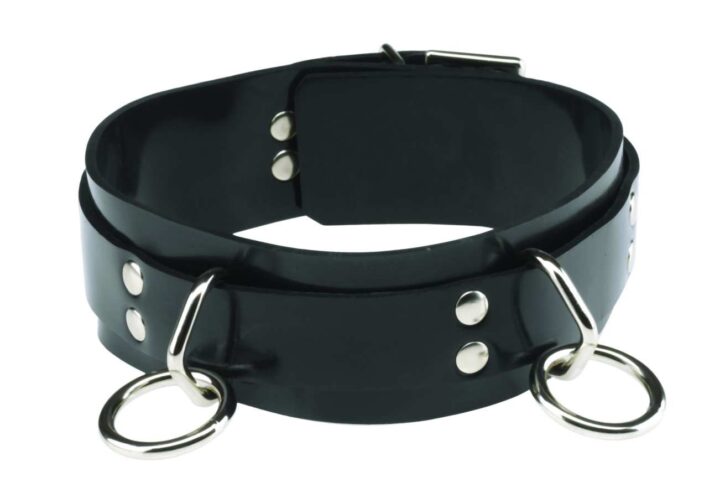Collars and Collaring
Owned slave or latest Hot Topic fashion? Hard to tell these days.
Let’s start with the basics. What can a collar be made out of? The answer is, just about anything. Steel, leather and rope are probably the most popular. However, keep in mind a “collar” isn’t necessarily something that must be worn around the neck. It may be a bracelet, ring, piercing, tattoo, etc. Basically anything that represents the relationship dynamic. Keep in mind also that a single s-type may wear a collar just to indicate that they are an s-type.
This brings us to what kind of collars you may wear or see others wear. There are pet collars that are usually used for those in a pet/trainer or owner dynamic or for those that normally identify in different roles but have a pet collar for when they specifically do pet play.
There is a play collar which is typically worn by the s-type in a scene with a play partner if their dynamic doesn’t go any farther than play. A play collar can also be used when the relationship is new and people are still in the get-to-know-you stage. They maybe don’t have an established dynamic but are enjoying play together or perhaps use it at events to show that they are in some kind of a relationship.
A type of collar that you don’t see as often, but is possible, is the collar of protection. When a D-type has committed to protecting an s-type in the community, the s-type may wear something that indicates that you need to go thru another individual (the D-type protecting them) before pursuing the s-type.
Now let’s talk about the collars that begin to take a D/s relationship to the next level.
The Consideration Collar has traditionally been the step taken after the initial get-to-know-ya stage. The people involved have spent a little time together and have gotten to the point that they have decided to make more of a commitment. Think of this as going from dating casually to becoming a committed couple if you think of it in vanilla terms. The D-type is “considering” the s-type and the s-type is “under consideration” of the D-type. Now, keep in mind either person can leave the relationship at any time, so really they are both “considering” each other. However, the traditional way of thinking helps to maintain the D/s aspect. This time period is typically used for the couple to get to know each other further, go through negotiations for play and for the relationship, as well as continue to evaluate if this is the right person for them.
After this period is traditionally when the Training Collar is given. This would be somewhat parallel to getting engaged in vanilla terms. This is a big step and indicates that this relationship is getting very serious. During this stage the s-type is usually pretty aware of the expectations of the D-type, however, during this time the protocol and expectations may be strengthened or taken to a higher level. This is a good time for both parties to make sure this is something they want long term.
The final collar is the Official Collar, or Formal Collar, or Slave Collar. This can be equated with a vanilla marriage (the wedding ring). This represents a long term commitment for both parties in their D/s dynamic. It could be a D/s relationship or M/s relationship – that depends on the people involved. Many people will hold a collaring ceremony to bestow the official collar in front of their loved ones. The ceremony is the vanilla equivalent of a wedding and can range from very casual to quite elaborate.
These days I see more and more people bestowing collars more casually. It’s one thing if they are simply play collars, however, in my opinion any collar more than that should really be considered with a serious look at commitment, trust, and mutual respect with a partner that you have gotten to know for a decent amount of time.










